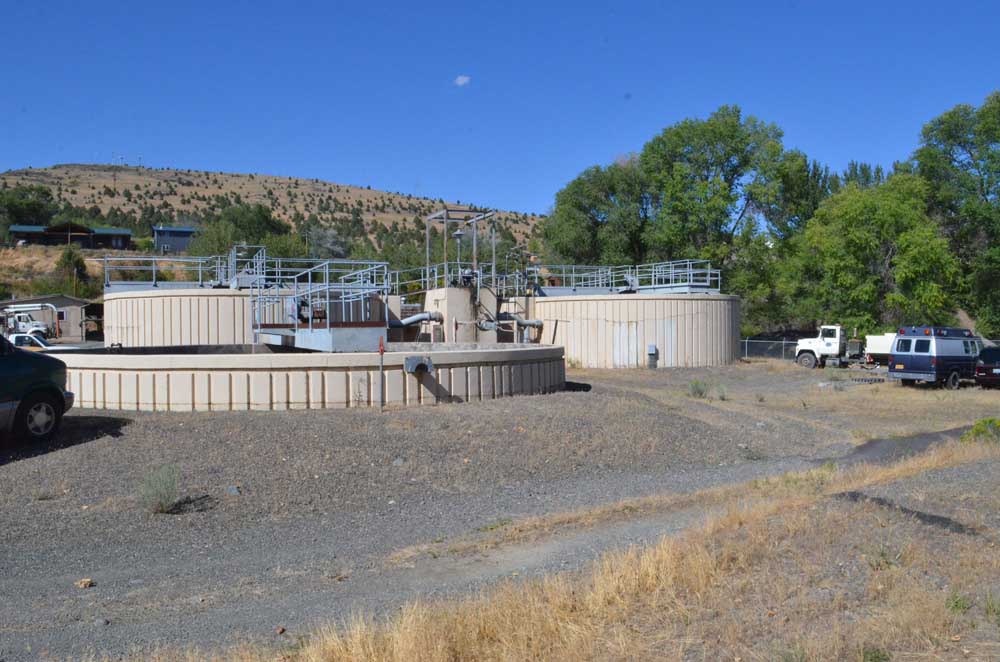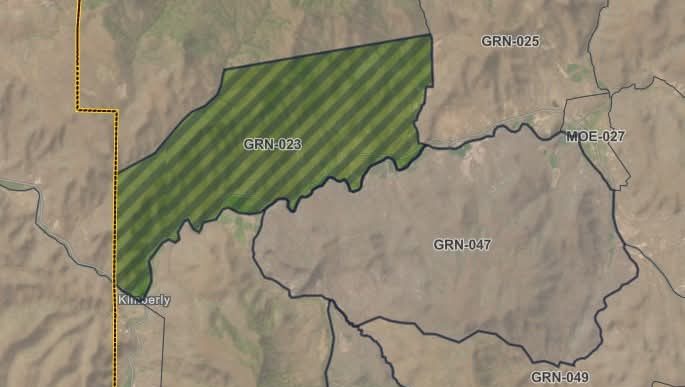PROGRESS: Seneca secures funding for $3.5M wastewater project
Published 12:00 pm Thursday, June 27, 2019

- The grills were busy at the Seneca Oyster Feed May 18.
At 4,690 feet on Highway 395 in Bear Valley, the small town of Seneca was a company town that has evolved over the years into a cohesive community serving surrounding ranches and occasional tourists.
Trending
A post office was established in the area in 1895, but the town didn’t really begin to grow until 1929 after the Edward Hines Lumber Co. took on one of the largest timber contracts in Pacific Northwest history and built a rail line from Burns to Seneca.
Logging in the area declined in the 1970s, and Hines closed down the railroad and local timber mills in 1984. The restored Bear Valley Lodge and bright red Seneca School remain standing from the company town days.
The city is now working on a major infrastructure project for a new wastewater treatment system.
Trending
After Hines
Hines built the lodge in 1939 as a boarding house for worker housing. After the mill closed, the building was mothballed, sold, transformed into a residence and informal bed and breakfast as the Bearcat Lodge, and finally shuttered again.
Grayback Forestry Inc. bought the lodge in 2013 and put about $250,000 into the building, bringing it up to code, clearing water out of the basement, installing fire sprinkler and alarm systems and insulating the walls and ceilings.
Grayback houses firefighters and employees for thinning, piling, burning and other forest restoration projects. About 25 workers reside there nine months of the year, and the building can accommodate up to 40 people at peak use.
Hines also built the Seneca School in 1932. In the past, students attended the rural school through eighth grade. Today, it’s home to students in kindergarten through sixth grade. After that, students are bused to Grant Union Junior-Senior High School in John Day.
The main industries in Seneca today are ranching and timber production, with the potential for some growth in tourism. Local services include a general store and limited dining. A medical clinic connected to an office in Burns no longer operates.
According to a May 2019 draft Economic Opportunities Analysis report by Johnson Economics, challenges facing the small city include geographical isolation, an aging workforce, declining population and difficulties in attracting and retaining younger residents.
Seneca also experiences the coolest weather in Grant County — the coldest temperature officially recorded in Oregon was 54 degrees below zero in Seneca in 1933.
Outdoor activities
A number of outdoor recreation opportunities exist in the Seneca area. Hunting and mountain activities are within a short driving distance. The Grant County Shooting Sports Club operates a trap and shooting range that is used by individuals and for events.
The Bear Valley Meadows Golf Course, owned by the city, is a nine-hole pasture golf course near the Silvies River. The annual Seneca Oyster Feed is a fundraiser that supports the golf course. The event features golf and softball tournaments and oysters trucked in from the west coast.
The Seneca Stampede cross-country horse race, with 50-mile and 25-mile courses, has faded away. And the Seneca Winter Classic snowmobile race depends on snow conditions, which have been too late or nonexistent in recent years.
A major addition to the area is the Retreat, Links & Spa at Silvies Valley Ranch. The boutique resort, a 15-minute drive from Seneca at a ranch dating to 1883, held a soft open in 2017.
The 140,000 acres of deeded and leased land are home to four nationally recognized golf courses, a resort building with a spa and conference center, vacation homes and cabins and opportunities for shooting, hiking, bike riding, fishing, four-wheel tours and other ranch activities.
City projects
A major city infrastructure project is underway in Seneca. Project planning for a new wastewater treatment plant on the opposite side of the Silvies River began in 2012 but was delayed until the city became eligible for funding assistance.
The $3.5 million project will be financed with a $2.5 million federal Community Development Block Grant and a $500,000 grant and a $500,000 loan from the Oregon Infrastructure Finance Authority, City Manager Raamin Burrell said. The nearby airstrip, which had been the site of the Winter Classic snowmobile race, has been deactivated because of the project.
Seneca is a small town with the same problems found anywhere else, Mayor Brad Smith said. He credited former City Manager Josh Walker for getting the huge wastewater treatment plant project underway and for keeping an eye on it as the city’s project manager.
Seneca has about 160 permanent residents and 130-140 active water and sewer hook-ups. Much of the sewer collection system was built before the city was incorporated in 1970, Burrell said. Rates were slowly increased over several years ago to allow the city to take on the debt needed to get the project completed, she said.
The city, however, was unable to line up sufficient funding to replace the aging sewer and water mains throughout the city at this time. The city will look at chip-sealing its streets by next year to make use of a state Special City Allotment Program grant, Burrell said.
The city is also lining up funds for a new fire station with three bays to store its newer equipment. The city was approved for a USDA Rural Development grant and has applied for other grants to make up the difference.
The popular gazebo at the city park was torn down shortly after the 2018 oyster feed. The city plans to apply for grants to update the park with a new eating shelter, playground equipment, benches and a barbecue pit, Burrell said.
Internet access
One of the main challenges facing Seneca in the 21st century is inadequate internet access. The city joined John Day and Grant County to establish the Grant County Digital Network Coalition to make use of a $1.8 million legislative appropriation that John Day received to promote broadband service in the county.
The initial focus has been to run fiber cable from a main trunk line in Burns north to John Day. Seneca would benefit as the cable passed through town. Over time, it became evident that leveraging the coalition’s funding with federal grants would require providing connections to public buildings, businesses and residences along the way.
The coalition already has run a fiber cable from the Seneca City Hall building to Seneca School, which receives internet through a network maintained by the Grant County Education School District.
The coalition has applied for a $3 million USDA Community Connect grant, which would be used to run fiber from Burns to Seneca and route fiber around the city of Seneca. A partnership with Oregon Telephone Corp. would provide fiber-to-home connections and internet service.









